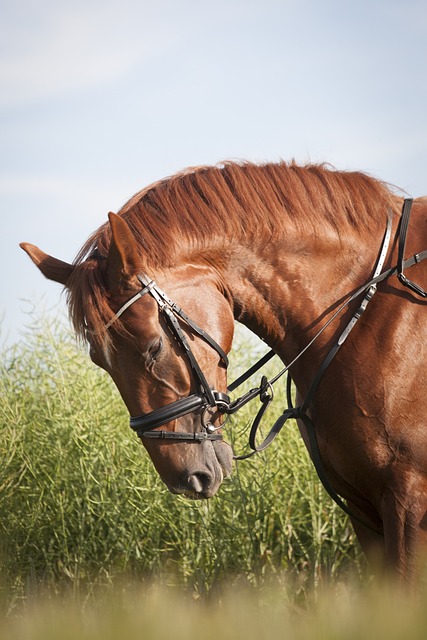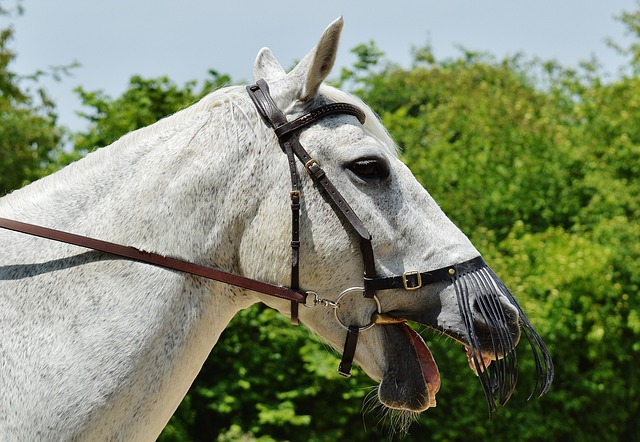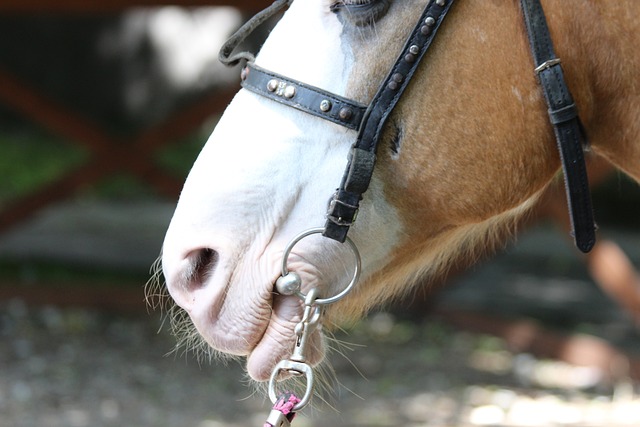
Bridle Types and Uses
April 16, 2023
Nosebands
April 17, 2023There are many types of bits used in horse riding and each bit has a different design and purpose. Here are some of the most common types of bits used on horses and their uses:
- Snaffle Bit: The snaffle bit is the most common type of bit used in horse riding. It is a simple bit with a jointed mouthpiece and applies direct pressure to the horse’s mouth. The snaffle bit is commonly used for basic riding, schooling, and dressage.
- Pelham Bit: The pelham bit has two sets of reins and combines the action of a snaffle bit and a curb bit. The snaffle rein provides direct pressure to the horse’s mouth, while the curb rein applies pressure to the horse’s poll and chin groove. The pelham bit is commonly used for hunting and jumping.
- Curb Bit: The curb bit has a port in the center of the mouthpiece and applies pressure to the horse’s poll and chin groove. It is used to give the rider more control over the horse’s head and neck and is commonly used in western-style riding, such as barrel racing and roping.
- Kimberwick Bit: The Kimberwick bit is a variation of the pelham bit and has a straight mouthpiece and a bit shank with a curb chain. The Kimberwick bit provides more control than a snaffle bit but less than a pelham bit, and is commonly used in dressage and polo.
- Gag Bit: The gag bit has a set of rings that allow the reins to be attached at two different points on the bit. When the reins are attached to the lower ring, the gag bit works like a snaffle bit, but when the reins are attached to the upper ring, it creates leverage and applies pressure to the horse’s poll and mouth. The gag bit is commonly used in jumping and eventing.
- Hackamore: The hackamore is a bitless bridle that uses a noseband and reins to apply pressure to the horse’s nose and chin groove. It is used for horses that do not tolerate bits well or for riders who prefer not to use a bit.
- Bitless Bridle: The bitless bridle is designed to provide control without using a bit. It can be used for horses that do not tolerate bits well or for riders who prefer not to use a bit.
It is important to choose the right bit for your horse’s needs and to ensure that it fits properly and is used correctly. Using the wrong bit or using a bit improperly can cause discomfort, pain, and injury to your horse. Always consult with a professional trainer or instructor to determine which bit is best for your horse and your riding discipline.
Overbitting a horse, which refers to using a bit that is too severe or harsh for the horse’s needs, can cause discomfort, pain, and even injury to the horse. Here are some of the potential dangers and damage that can be caused by overbitting a horse:
- Mouth injuries: Using a bit that is too severe or harsh can cause cuts, bruises, and sores in the horse’s mouth, which can be painful and make it difficult for the horse to eat and drink.
- Neck and spine injuries: Using a bit that is too harsh can cause the horse to throw its head up or pull back, which can lead to neck and spine injuries. This can also happen if the bit is adjusted too tightly or if the rider pulls on the reins too hard.
- Behavioral issues: Overbitting can cause the horse to become resistant, uncooperative, or even dangerous. The horse may become difficult to control, refuse to work, or develop anxiety and fear around riding and handling.
- Damage to trust and communication: Overbitting can damage the trust and communication between the horse and rider, making it difficult for them to work together and achieve their goals.
To avoid overbitting your horse, it is important to choose the right bit for your horse’s needs, skill level, and discipline. You should also make sure that the bit fits properly and is adjusted correctly. If you are unsure about which bit to use, consult with a professional trainer or instructor who can help you choose the right bit and show you how to use it properly. Additionally, it is important to ride your horse with light, gentle hands, and to avoid pulling on the reins too hard or using harsh or sudden movements.



